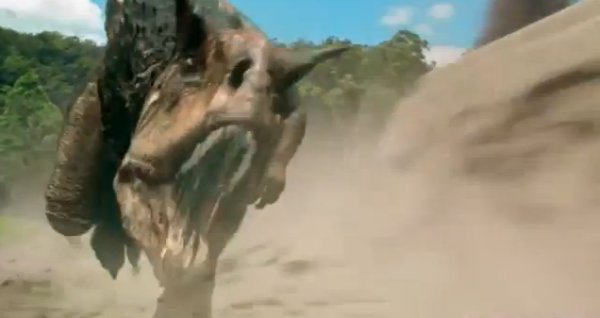Is 'Terra Nova's' Dinosaur Population Accurate?

In "Terra Nova," a new sci-fi show on Fox, a group of people are transported back in time to escape Earth's degradation. Fortunately, they land in a spot with lots of greenery, fresh water and clean air. Unfortunately, it's also chock-full of dinosaurs, as shown in the first episode.
But is the show overstating the number of lizard-beasts that wandered the countryside?
"The honest answer is that we don't know what the population densities of dinosaurs on the landscape would have been," says James Farlow, a geologist at Purdue University, who has examined this topic.
Farlow tried to estimate how many dinos strolled the landscape by using the land's carrying capacity — how many herbivorous dinosaurs could be supported by the nutrients in a given ecosystem — based on estimates of the animals' body mass and large dietary requirements. He and his colleagues focused on what would be the western United States during the late Jurassic period, 160 million to145 million years ago. His best guess is that there was an upper limit of a few hundred animals across all shapes and sizes per square kilometer, and up to a few tens of large sub-adults and adults.
Looking beyond the numbers of plant-eaters, there were probably even fewer meat-eaters. "Whatever the true densities of the large herbivores were, large carnivore densities would have been 1 to 10 percent or so of those values," says Farlow. [What If a Giant Asteroid Had Not Wiped Out the Dinosaurs?]
Of course, these figures are based on estimates of what we know: There may be more types of dinosaurs to discover. One study in 2006 estimated that humans have found less than a third of all possible groups, and a further 1,300 or so are still hidden beneath in the ground. The researchers also predicted, given the current rate of fossil discovery, that 75 percent of findable species will be known within 60 to 100 years and 90 percent within 100 to140 years.
So despite what Terra Nova shows, the next time a group of people are thrust back to the distant past, it's not very likely that they will end up right on top of a hotbed of dino activity. Maybe just a handful of large, lumbering plant-eaters, a bunch of smaller herbivores, and the occasional predator. But who would watch that show?
Get the world’s most fascinating discoveries delivered straight to your inbox.
This story was provided by Life's Little Mysteries, a sister site to LiveScience. Follow Life's Little Mysteries on Twitter @llmysteries, then join us on Facebook.
